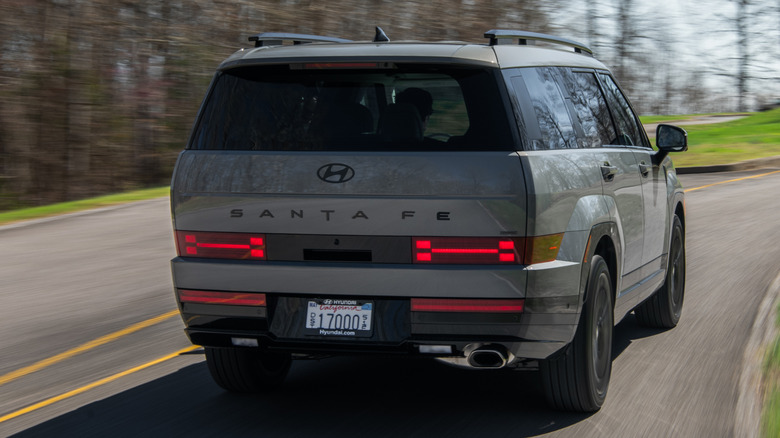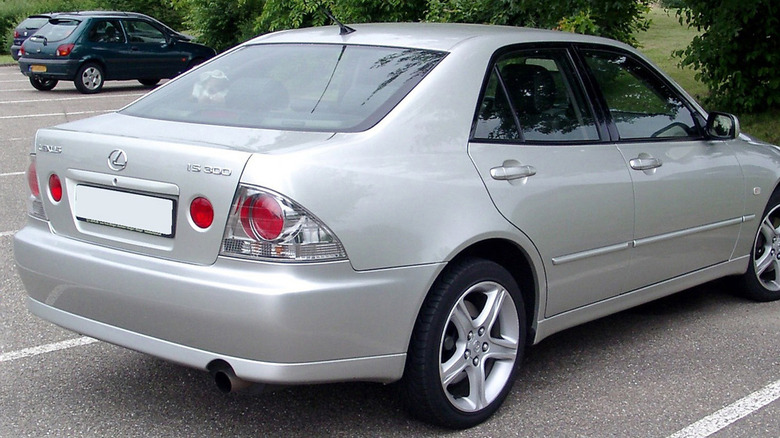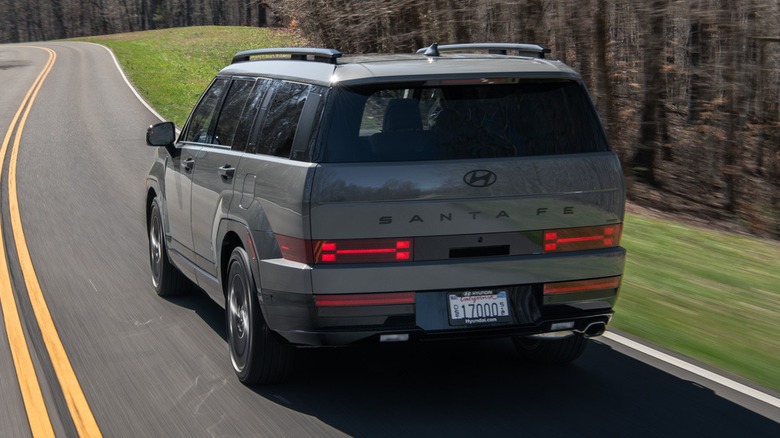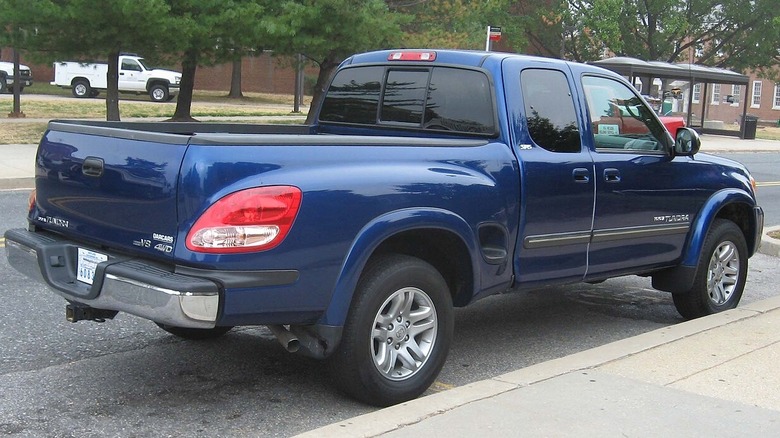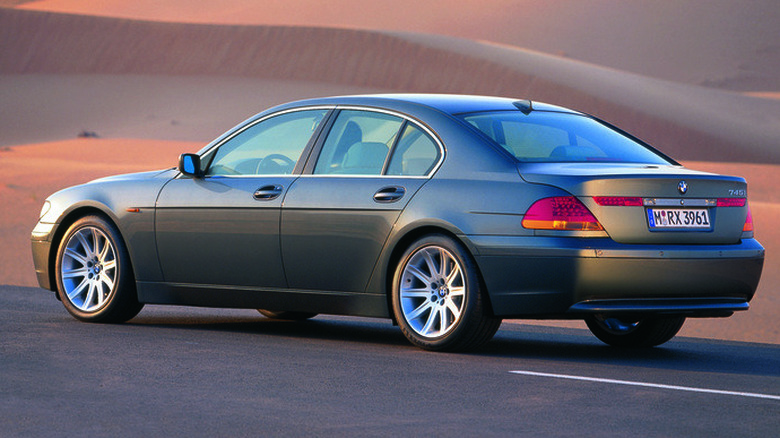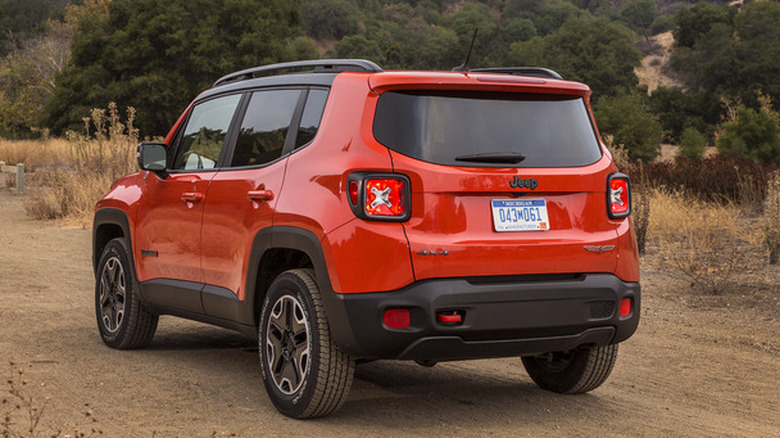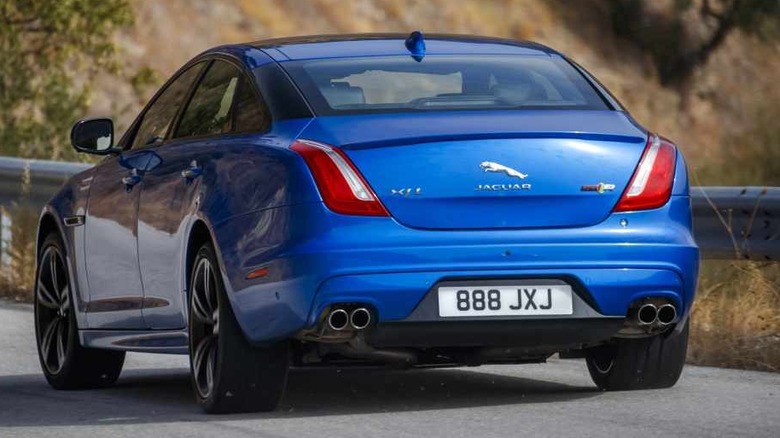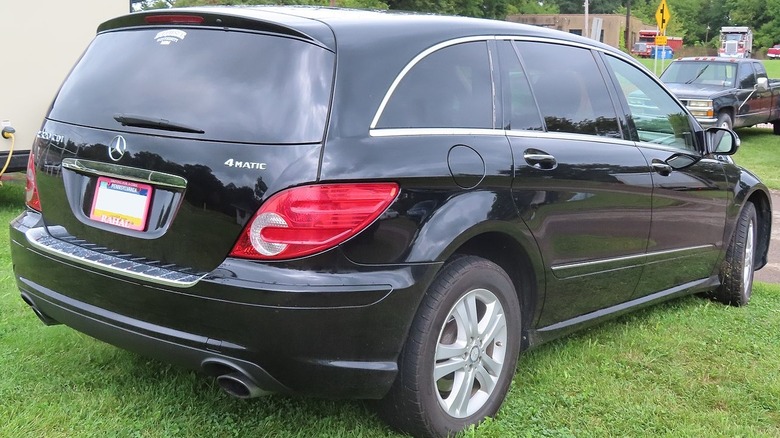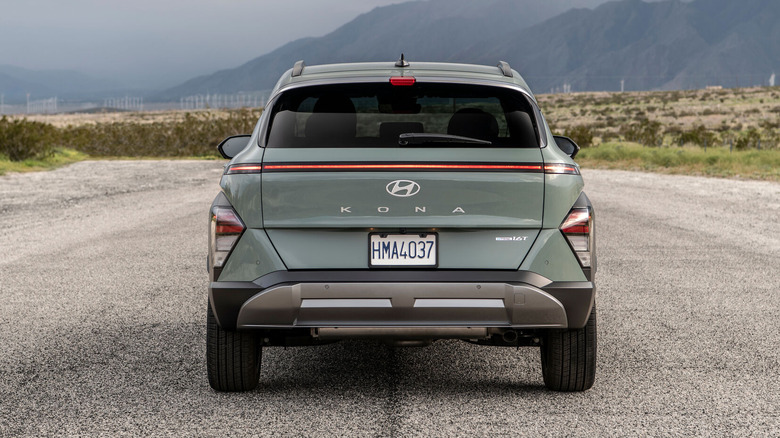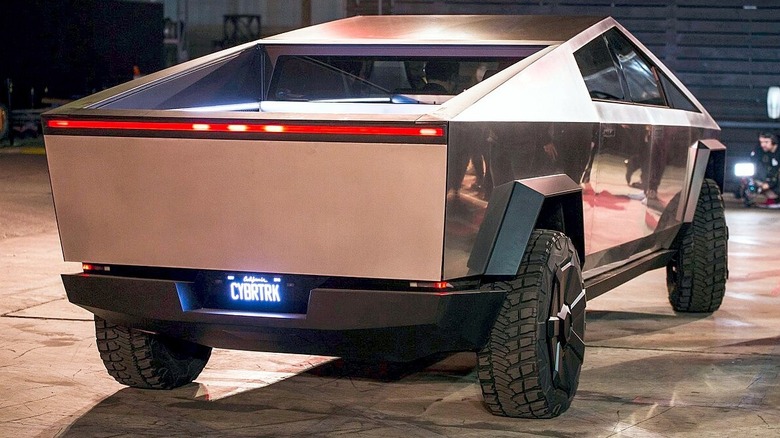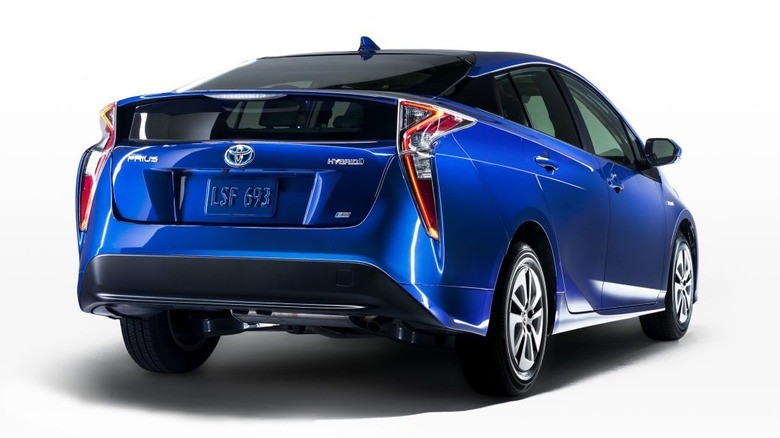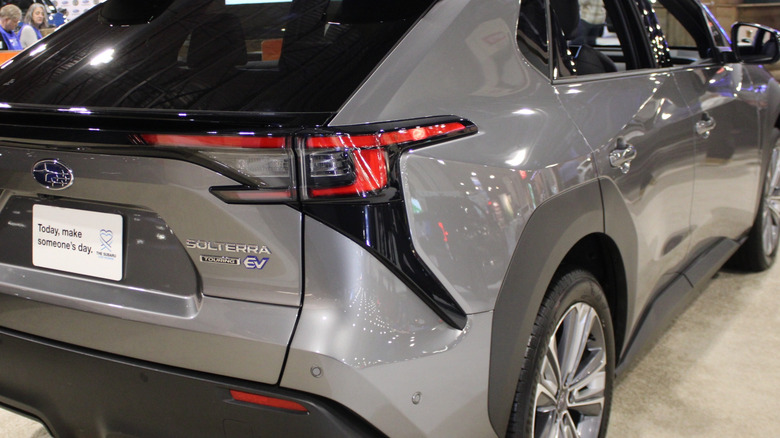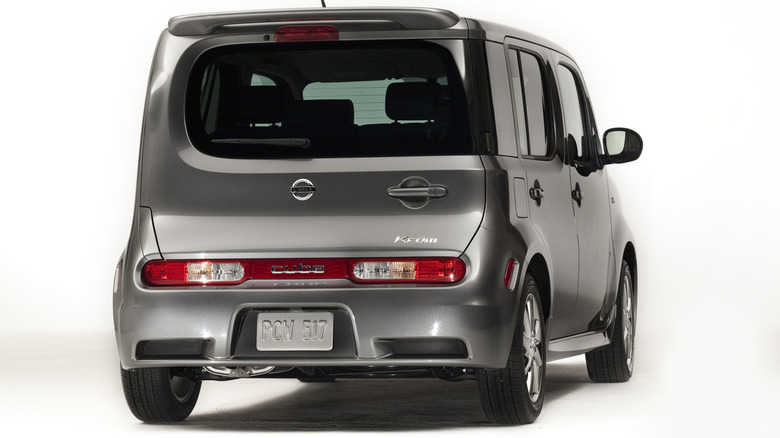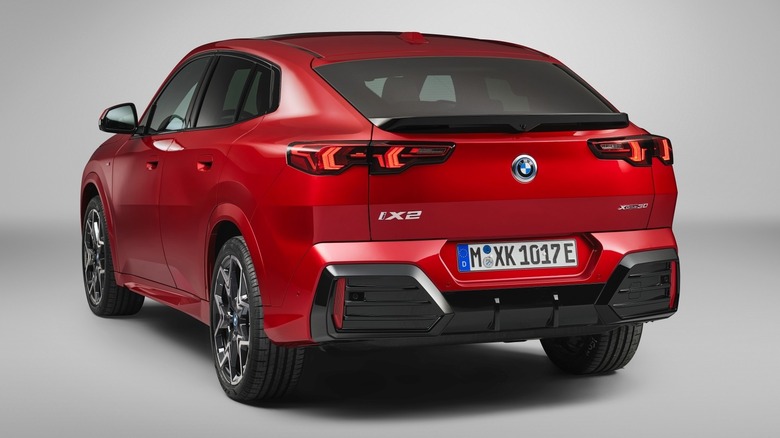13 Cars That Were Ruined By Their Ugly Tail Lights
There is no shortage of cars with styling that did not fare well in the eyes of the public. Pontiac's forlorn Aztek is perhaps the most prominent scapegoat when it comes to ugly cars. But unlike the Aztek, which looks unfortunate from every angle, there are cars out there that look good from the head-on perspective, and nice as you round the three-quarter angle into the profile, but then lose the thread around the back.
Specifically, we're talking about cars with ugly tail lights. These are the vehicles whose design tends to be undone thanks to strange, unusual, or just downright ugly tail lights. In some cases, the entire design, front-to-back, is questionable, but others, like the original Lexus IS, manage to look sharp from most angles except the rear-end. Now, judging a car's tail lights to be ugly or not is a purely subjective exercise and not all will agree. So please take my decidedly personal opinions with a grain of salt and without any offense. As the proverb says, "One man's trash is another man's treasure."
Lexus IS300
Not only does the first-gen Lexus IS300 have ugly tail lights, it deserves due credit for kicking off the aftermarket Altezza tail light frenzy that took hold in the early 2000s. For readers of Super Street magazine and fans of Fast and Furious driving, these clear-lensed round lamps with chrome surrounds were the must-have automotive upgrade. It was a chapter in automotive history best forgotten, and the IS300 was the primary offender. Otherwise, it was an excellent four-door sports sedan with rear-wheel drive, a naturally aspirated straight-6, a 5-speed manual transmission, and a 3,255-pound curb weight.
The front view projected a luxury sport compact look, and the cabin could be fancily outfitted with leather upholstery, a moonroof, and Alcantara. Features like the chrome ball-style shifter, double wishbone suspension all around, and available summer tires added to the car's performance appeal. But oof, those tail lights really missed the mark with an in-your-face design that broke up the taut sheetmetal in all the wrong ways. Even worse was the SportCross longroof variant — not from a cool-factor perspective as wagons are always better than sedans, but because the steeply raked rear glass seemed to accentuate the ugliness of the rear lamps. Not great, Lexus, not great.
Hyundai Santa Fe
When Hyundai unveiled its current Santa Fe generation for 2024, it was fair to say folks did a double-take, both critics and regular consumers alike. Gone was the anonymous blob styling so common among the crossover set, and in were sharp 90-degree corners, a square jaw, and an overall style that took a page out of Land Rover's playbook. That is, until you stand behind the Santa Fe. By positioning the tail lights so low, the Santa Fe has that not-great droopy drawers look. There's just too much space between the lights and the lower edge of the rear glass.
Were Hyundai to slide those lights up and adjacent to the Hyundai emblem, those ugly tail lights would be less offensive. But to fully fix these woes, it would also be worth easing off the heavy use of the letter H. Illuminated, the tail lights are supposed to be a pixelated version of "H" for Hyundai, which they could be if you're familiar with the automaker's press release that states the H-shaped lamps "harmonize and complement the front view for a clean, attractive lighting signature from all angles." If you say so, Hyundai.
Toyota Tundra
For the most part, first-generation Toyota Tundras were solid trucks. V6 or V8 power plants, 7- or 8-foot beds, up to 7,100 pounds of towing capacity, and an available 6-speed manual were offered. Amenities were light, with the best options consisting of a power-operated rear window, a JBL audio system, and heated front seats. But these early Tundras were, like their peers, still in classic pickup truck mode, that era before this segment became bloated with luxury trimmings. On that front, the original Tundra looked the part with a simple exterior envelope that fit the pickup truck mold and came with the option of a regular, extended, or crew cab body.
However, there was one particular variant that took the otherwise good old pickup and turned it into something strange: the Stepside model. Only offered on extended cab bodies, the StepSide design leaned on pickup truck styling circa the 1950s while offering better access to the cargo bed without dropping the tailgate. On these models only, Toyota swapped the regular tail light pod for an oddball ovoid unit that looked like part of the rear fender flare. Unfortunately, from all angles, it was simply a set of ugly tail lights.
BMW 7-Series
Chris Bangle's infamous "Bangle Butt" BMW design has been the, well, butt of many automotive jokes over the years. One such vehicle that jumps out in this conversation is the E65-generation 7-Series, one of many poorly executed cars from an automaker that should have known better. A stark departure from the traditional lines of its predecessors, this early 2000s 7er drew on the BMW "flame surfacing" design language of the time. Forgetting the rest of the car's looks for a second, let's zero in on the tail lights. Early models saw two sections of lights separated by the already awkward trunk line. "Disconnected" is a word that comes to mind, and it was anything but clean.
In this particular case, the scalloped tail lights made matters worse and gave the E65 7-Series an overall unpleasant look. A pity, as the car debuted "world-first" adaptive brake lights and was otherwise a luxury rockstar with an options list that included a 438-horse V12 powertrain, electronic dampers, and 16-way adjustable front seats with heating, ventilation, and massaging. Perhaps in an attempt to correct this design approach, BMW facelifted the 7-Series just three years after its debut and, in the process, brought the tail lights together and smoothed out the headlight shape.
Jeep Renegade
Jeep leaned hard on its Willys and Wrangler heritage with the tiny Renegade crossover that was recently discontinued. Describing it as both rugged and chic, the Renegade was said to evoke the Wrangler's hard top with its raised beltline and optional daylight opening on the roof. Hmm. But the Renegade ends up on our plate due to the X-design theme rear lights, which were inspired by the "jerry" cans that were mounted on the back of the original Willys Jeep. What that looks like in reality is a big, clear cube that appears to have been installed using the world's largest Phillips head screwdriver.
This is not helped by the Renegade's squashed Wrangler vibe, which manages to be gawky and weird all in the same breath. In fairness, the little Jeep offered desirable enthusiast traits like a 6-speed manual transmission and off-road-friendly content like up to 8.7 inches of ground clearance and a more aggressive Trailhawk trim line. I can't say for certain that the Renegade's ugly tail lights led to its demise, but they likely did not help.
Jaguar XJ
The final run of Jaguar's XJ flagship saloon had so much going for it: a choice of supercharged V6 or V8 engines with up to 575 horsepower, quilted truffle leather upholstery, a panoramic moonroof, massaging and reclining rear thrones, and 44 inches of backseat legroom in the long wheelbase spec. Plus, it looked darn good with what Jaguar posited was "a seductive mix of striking design" and the "epitome of fluid, contemporary automotive style." Agreed, at least from the front and sides. But those tail lights really soured the elegant XJ mood. Clearly intended to follow those seductive lines around the rear fender, the completed look was just not right.
I'd argue the lamp design was worsened by the so-called floating roof look Jaguar employed on the XJ. If those C-pillars were painted to match the rest of the car, these tail lights might have been less unfortunate. But somehow, the floating roof manages to visually extend the lamps, and it isn't helping. Like the Renegade, it seems unlikely that ugly tail lights were the main reason Jag canned the XJ, but perhaps cleaner lines would have extended its shelf life.
Mercedes-Benz R-Class
It's hard to imagine anyone describing the Mercedes-Benz R-Class as pretty or handsome. Dubbed a sports tourer by the German automaker, the R-Class looked like it had an S-Class front clip, a Pontiac Trans Sport raked windshield, and a minivan rear half. But it was really the ugly tail lights that did in the R-Class. Almond-shaped pods that followed the bodyside groove, they were just all wrong. It was like Benz was trying too hard to make the R-Class a car in deference to its more truck-like G-Wagen.
However, the final product was too stretched and deformed to be called cohesive, and even the 2011 refresh that brought a slightly different tail lamp look didn't deliver an improvement. This is not to say the R-Class was a bad wagon/crossover/minivan, as it had neat features like a power-operated third-row window vent. And it was especially neat in the special-order R63 AMG guise. That rare beast came with a naturally aspirated 6.2L V8 making 507 hp, making it one of the most powerful minivans ever made. It also rode on 20-inch wheels, had an AMG-tuned suspension, and could sprint to 60 in just 4.6 seconds. For a setup like this, one could make an exception for poorly designed rear lamps.
Hyundai Kona
With the current generation Kona, Hyundai went bold, channeling RoboCop's helmet with the front-end design. Weird, but it works. What doesn't work is the Kona's keister and its ugly tail lights. A five-sided pod floating within the fat plastic slabs that surround the wheel wells, the effect is not very nice. Interestingly, the Kona's front light pods are very similar but manage to work within the massively overwrought front fascia. But around back, there are not enough complementary shapes to work with, and, as a result, the tail lights stick out like sore thumbs.
Also, it seems an awfully vulnerable position for such a critical vehicle component, one that could be quickly ruined by, say, a runaway parking lot shopping cart. Piling on, the RoboCop-like rear light bar is less exciting as it is too high up and far removed from any other tailgate features to look good. The Hyundai Kona has many fine features like an EV model with 260 miles of range, zany Neoteric Yellow paint option, dual 12.3-inch cabin displays, and a hands-free liftgate. But the "parametric surfaces" used to define the tail lights are anything but fine.
Tesla Cybertruck
Tesla's Cybertruck is the modern Pontiac Aztek from a design perspective. From all angles, of which there are many, it seems like Tesla used the legendary Super Nintendo video game Star Fox for inspiration. That applies to the Cybertruck's tail lights as well. A comically thin LED strip runs across the top of the tailgate, and within it are tiny block-shaped elements that light up when the brakes are engaged. Taken all together, the whole back end of this Tesla resembles a big rectangular LEGO wall topped by those translucent red LEGO strips.
Not only is it weird looking, but the tail lights are far too small in relation to the enormity of the Cybertruck. The big Tesla is not without its charms: up to 366 miles of driving range, stainless-steel body panels, and the ability to go from 0 to 60 mph in just 2.6 seconds. You can even tow 11,000 pounds with it, making the Cybertruck a strong competitor among the full-size pickup class. However, the Cybertruck's garish styling and ugly tail lights mean it will always struggle to compete with the traditional pickup truck set.
Toyota Prius
Before Toyota served up its slinky latest-generation Prius, this long-running hybrid came with the definition of dorky styling. But of all the Prii over the years, I would have to pick the fourth generation as having the ugliest tail lights of all. Built between 2016 and 2022, Toyota said this Prius had a striking design inspired by a runner in the starting blocks. Definitely striking. The automaker also noted that the rear lamps "express the distinctive lines of the Prius from the rear spoiler to the trailing edges of the sides and leave one of the most evocative nighttime signatures on the road today."
I agree that the fourth-gen Prius tail lights are easily identified at night, but "evocative" is not the word I'd use to describe them. On top of this, the full-width glass panel running between those lamps is bisected by a sort-of spoiler, and the lamps themselves extend deep into the rear fenders. It was an exceedingly overwrought approach that didn't look great. But hey, perhaps it's a price worth paying to enjoy as much as 58 mpg around town from this iconic little hybrid.
Subaru Solterra
I like Subarus, but I don't think it would be a stretch to say the Japanese automaker's vehicles are not loved for their design. Big chunks of black plastic cladding will do that to a car. With the Solterra EV, however, Subaru really dug deep into clunky design, especially when it comes to the tail lights. Subaru says the high positioning and trapezoidal theme of these rear lamps "strengthens the design" and that the "bold wheel arch moldings provide a confident stance."
I would say that trapezoidal is a stretch and that the pointy lamp housings appear to have eyeliner fit for a KISS concert. The acres of body cladding aren't doing this design any favors, but the Solterra definitely has a better name than its Toyota bZ4X twin. It also features full-time all-wheel drive with Subaru's advanced Dual-Function X-MODE technology, offers a 228-mile driving range, and delivers a nice electric crossover package. Unfortunately, the Altezza-like tail lights on the Subaru Solterra take something away from it.
Nissan Cube
Nissan said its Cube cute-ute resembled a "bulldog in sunglasses" with its confident stance — a bold and pretty much true statement. The Cube was a breath of fresh automotive design air in a segment often brimming with anonymity. The curved windows and wheels pushed all the way out to the corners definitely gave the Cube presence. And the approach continued inside with funky "water drop" accents and available shag fabric trim. But something went sideways around back, or really, became asymmetrical.
It was here that Nissan went too far into the whimsical weeds with that refrigerator-style back door, a rear window that appeared to wrap around the passenger-side D-pillar, and bar-type tail lights positioned way too low. Nissan said it imbued the Cube with an anchored feel, but like Hyundai's latest Santa Fe, this design only made the little Nissan look like it had a sagging rear end. The Cube was not without its merits, as Nissan offered content like a Rockford Fosgate audio system, and its powertrain, which could be had with a 6-speed stick, delivered as much as 30 mpg on the highway. Unfortunately, it was all just a bit too awkward for my liking.
BMW X2
BMW has fully fleshed out its coupe-like crossover lineup of late with the X2, X4, and X6. Without fail, these supposedly sleek SUVs more closely resemble potatoes on wheels in my eyes, and the latest X2's tail lights really dial up the ugly. Per BMW, the X2 is not a potato but a sports activity coupé, or SAC for short, replete with accent aigu. All new for 2024, it is said to have an expressive rear end with a rear light design specific to this model that will "enrich the sporting flavour." Fancy. I see a serrated lower edge with two repeated sections marred by the tailgate seam.
Add in the Gurney-style spoiler and bulging lower body cladding for an overall effect that is not very pretty. The M35i variant, with its 312-horse turbocharged inline-4 and ability to run from 0 to 60 in 5.2 seconds, at least adds driving excitement to the mix. And high-end features like augmented reality maps, a panoramic curved cabin display, and quilted leather massaging seats certainly live up to the BMW brand of luxury. But man, those X2 tail lights are not doing the littlest BMW SAC any favors.
